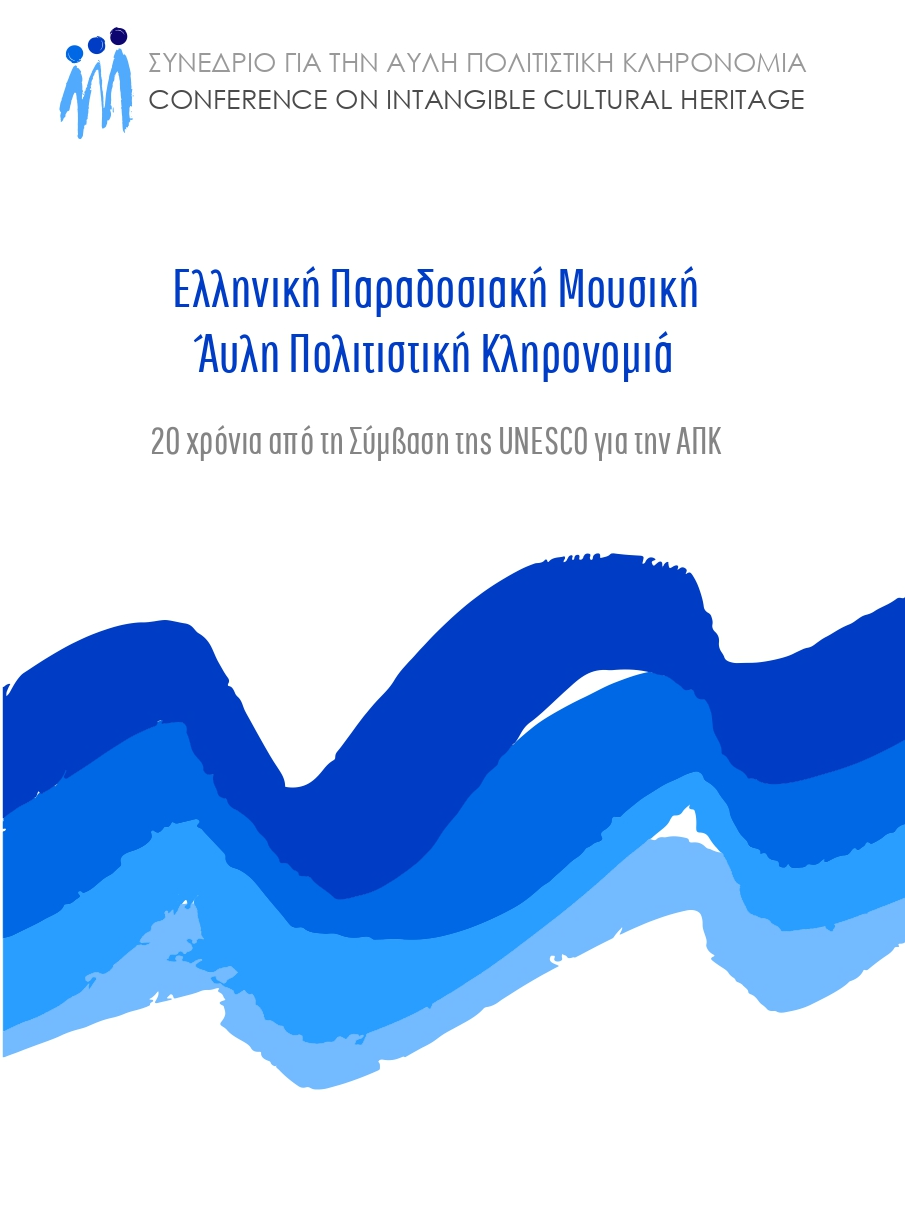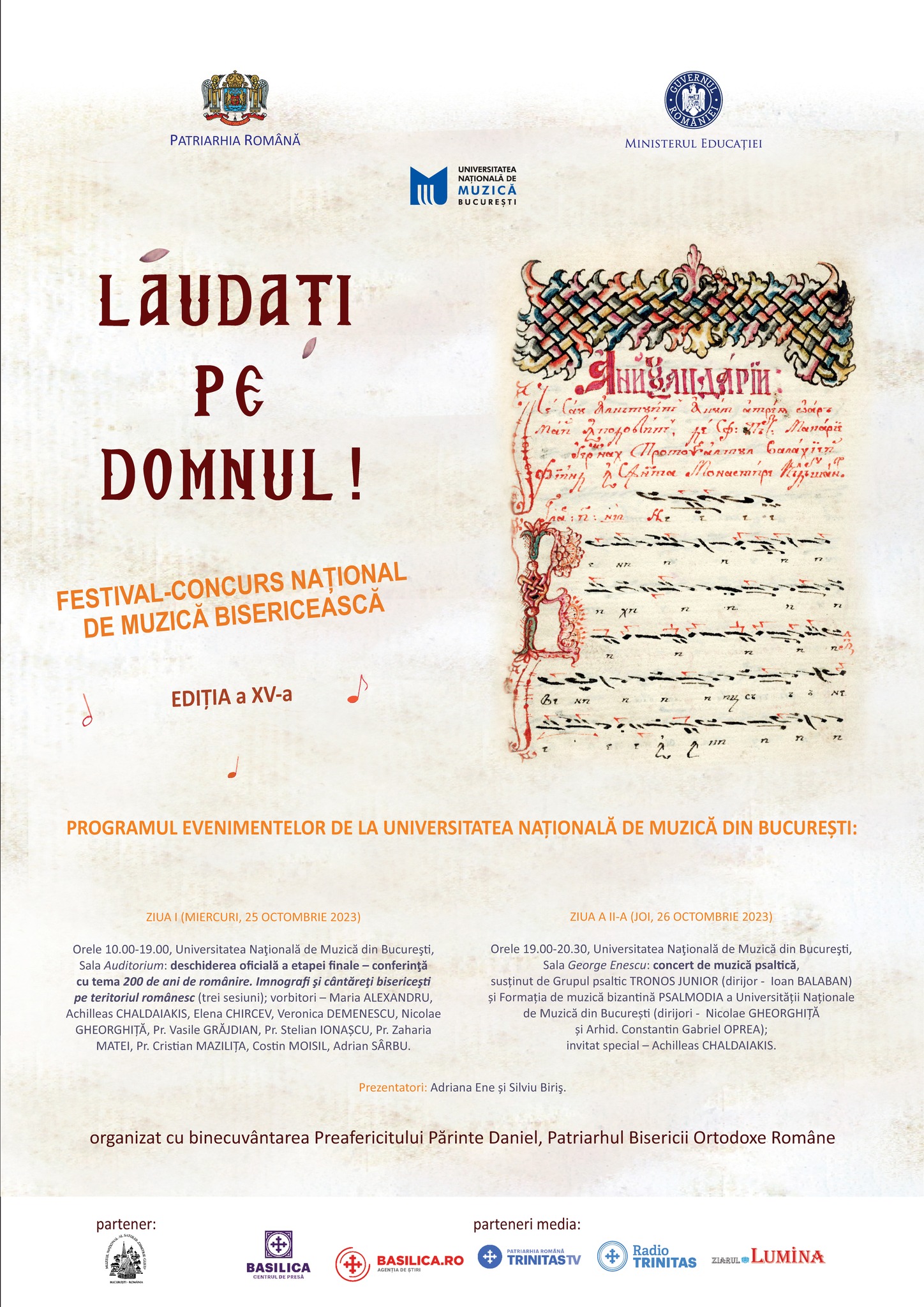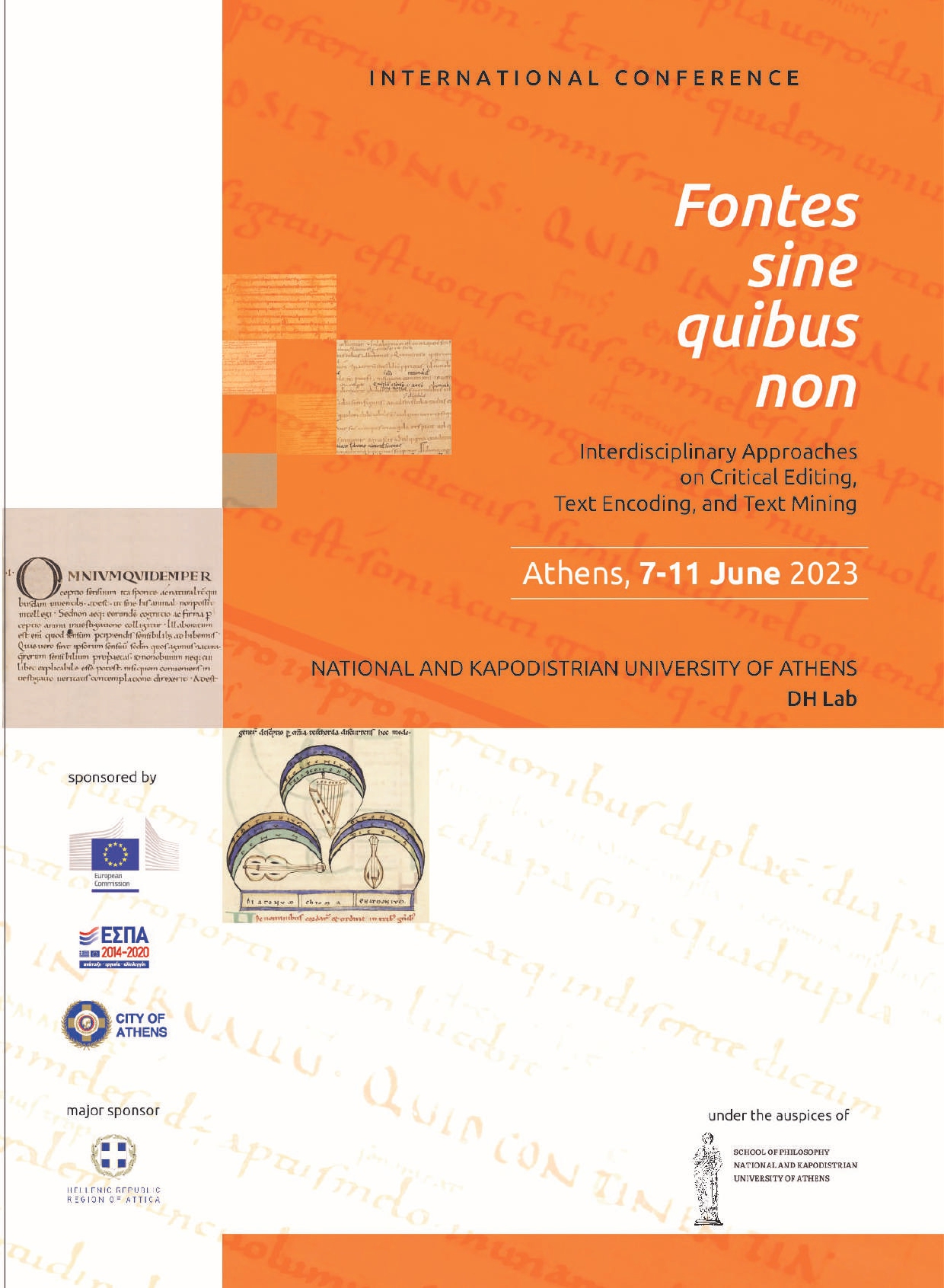“The Sounds of the Holy: From Manuscript to Performance”
Επρόκειτο να συμμετάσχω με ανακοίνωση υπό τον τίτλο:
A Kalophonic Verse from 2nd Psalm composed by J. Koukouzeles: ‘From Manuscript to Performance’
[τελικά, δεν κατέστη δυνατόν να παρευρεθώ προσωπικά στις εργασίες του συνεδρίου]
In the present paper, I shall refer to the full musical text of a Kalophonic Verse from the Second Psalm, composed by John Koukouzeles; this is a long composition of great musicological importance, which will mainly be studied according to its ‘exegeses’ version, made in 1818 by Chourmouzios Chartophylax [a musical text kept in his autograph codex No. 703 of the collection of the Metochion of the Holy Sepulcher, ff. 227v-235v]. Moreover, in order to incite comparative musical parallelisms, I shall take into consideration the same composition additionally written (according to another Byzantine Notation System, i.e., historically speaking, the previous one from that of the so-called New Method’s relevant system) at two significant musical codices; in my opinion, they are codices that (potentially and hypothetically) could have been taken into account by Chourmouzios, at the time he was preparing his aforementioned ‘exegeses’; I am referring, specifically, to the manuscripts No. 222/73 of K. Psachos’ collection [an autograph of John Protopsaltis in 1766, ff. 56r-57r] and No. 36 of Gritsanis’ collection [an autograph of Cyril, Bishop of Drystras, in 1808, pp.170-177].
Through the continuous (and kalophonic) melodic flow of the composition under examination, a clearly latent ‘musical rhetoric’ is arising, a ‘musical rhetoric’ that at the same time is expressively dramatic; this ‘musical rhetoric’ gives prominence to a brilliantly developed corresponding interlocutory prospect of composition’s poetic text; a prospect that is inherent in the initially given psalmic verse [Psalm 2, 1]; a verse that is dynamically strengthened in its anagrammed and kalophonic management; a verse that is finally formulated in an actually new poem; this is a ‘musical rhetoric’ based and especially developed around a main ontological question [: why?], a question given from the very beginning through mentioned Psalmic Verse.
Consequently, the composition examined in the present paper is finally structured (compatible with its pre-exposed morphological philosophy) in several parts; this effort is a ‘proposal’ of mine, in order to be chanted by a soloist and a choir, respectively; this specific ‘proposal’ is aiming at the abovementioned promotion of composition’s dialogic melodic prospect, but at the same time is following the idea ‘from Manuscript to Performance’. In the emerging interpretation of the musical text commented here, the above (almost secret) morphology of the composition is sought in practice and that helps us to discover, through the individual melodic lines of the composition, its entire aesthetics.



